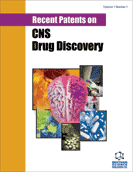Abstract
Background: We have recently released the structure of a class of quinolin-2-(1H)-on-3-carboxamide derivatives and among them; the drug A2 has the highest CB2 receptor selectivity.
Objective: In this work we assessed the immuno-modulatory properties of A2 in lymphocytes isolated from peripheral blood of multiple sclerosis patients and healthy donors.
Methods: Cell proliferative response was measured by 3H-thymidine incorporation, cell viability and apoptosis by trypan blue, annexin V staining and western blot. Cell activation was investigated by flow cytometry and molecular pathways by western blot.
Results: A2 exerted anti-proliferative effects with down-regulation of TNF-α, IL-10 and Rantes in both cell types. No relevant changes were observed in cell viability between the two cell types. In cells from healthy subjects, A2 did not induce apoptosis, inhibited the cell cycle and similarly down-regulated in CD4+T cells the markers CD69, CD25, CD49d and CD54. Indeed, A2 also inhibited the phosphorylation of Akt, NF-kB, IKKα/β, ERK and blocked the expression of Cox-2 and CB2 receptor. Published patents also describe CB2 receptor agonists like purine derivatives. Differently, in cells from patients, A2 did not affect CD49d, while potently blocked CD54 expression. A2 inhibitory effects of Akt and Cox-2 expression were confirmed, whereas unchanged level of the CB2 receptor was observed in these cells.
Conclusion: We reported similar effects of A2 in both cell types; however, a different mechanism of action might be suggested in cells from patients concerning cell activation and CB2 receptor expression. Overall, these data suggest an anti-inflammatory profile of A2 with potential implication in multiple sclerosis.
Keywords: Quinolin-2-(1H)-on-3-carboxamide derivative, lymphocytes, immuno-modulation, cell activation, CB2 receptor, multiple sclerosis.
 16
16





















